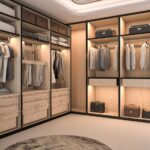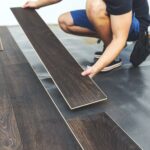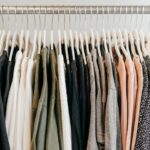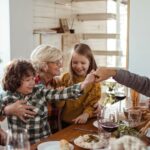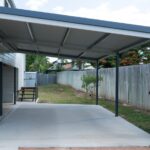Holly trees can be beautiful additions to the landscape, especially during the winter months when their glossy green leaves and bright red berries provide color and shelter for wildlife. But when a holly tree grows too large, starts shading out your garden, or becomes a maintenance headache, removal might be the only solution. Getting rid of a large holly tree isn’t as simple as chopping it down—it requires planning, the right tools, and a strategy to prevent regrowth. In this guide, we’ll … [Read more...]
Making Your Dream Home a Reality: Financing Options for Renovations
So, you’ve got big plans for your home. Maybe it’s that modern kitchen you’ve been eyeing on Pinterest, or perhaps a cozy backyard deck perfect for summer nights. Whatever your vision, one thing’s clear: renovations cost money. The good news? There are plenty of ways to finance your dream home makeover without losing sleep over it. If you're in the area, consider exploring Gainesville FL home remodeling services to help bring your vision to life. There are many situations when we have to apply … [Read more...]
Transform Your Room with a Chandelier Ceiling Fan: Beauty and Breeze Combined
A chandelier ceiling fan can add both beauty and comfort to your home with the right design. A light fixture that combines the grace of a chandelier with the utility of a ceiling fan, these devices are perfect for any room overhaul. From modern lounges to traditional dining rooms, a ceiling fan chandelier can be a statement piece that offers both style and breezy comfort. What Is a Chandelier Ceiling Fan? Chandelier ceiling fans circulate the air while providing more than just air circulation. … [Read more...]
WARDROBE SELECTION 101: KEY THINGS TO EVALUATE
Your closet is probably your bedroom's most significant piece of furniture. Making the right decision now is essential to avoiding regrets later. The sheer number of alternatives, however, might be daunting. Generally, your choice will rely on your needs, tastes, and available space. Worry not. We've made this guide to help you make a suitable choice. Think about your budget Affordability is one of the most crucial evaluations. Stores provide a wide range of options. You may find … [Read more...]
Modern Laminate Flooring: A Practical and Stylish Flooring Choice for Moms
Laminate floors have become an increasingly reliable choice for moms looking to shape a home's overall indoor atmosphere and functionality. Its unique features and aesthetic versatility offer a convenient solution for diverse needs. Its ability to imitate the look of real wood or tile while creating a warm and inviting ambiance makes it an appealing option for families seeking a beautiful floor covering that fits their lifestyle and budget. 1. Waterproof Laminate Flooring Waterproof … [Read more...]
11 Cost-Effective Tips for Upgrading Your Retail Clothes Racks
Upgrading retail clothes racks doesn’t have to break the bank. With a little creativity and smart planning, you can transform your store’s display into something that not only looks great but also encourages sales. In this article, you will learn the eleven budget-friendly tips that will help you elevate your retail space without spending a fortune. 1. Refresh with Paint One of the simplest and most affordable ways to enhance clothes racks is by applying a fresh coat of paint. Choose colors … [Read more...]
5 Things You Can Do with Your Family Everyone Will Enjoy During the Holidays
We’re only a few short months away from the holiday season which will be here before you know it. Knowing this, many people are starting to plan out travel dates to see family and friends for the upcoming holidays, and hosts are starting to think about fun activities to do during their stay. If you are planning to travel to see family or if you’re hosting family, we’ve gathered up five activities that everyone will enjoy. Here are five ideas to make your holiday season extra special: … [Read more...]
What Type of Carport Should You Install? Narrowing Down Your Options
Not all homes come with garages and some existing ones are only slightly larger than a garden shed. You need a place to park your vehicle where it gets some protection from the elements. You’ve priced garages and realized the cost simply isn’t in your budget. Don’t worry, you have another option, you can install a carport for your home or business. Now, you only have to decide on the type that you want. In today’s article, we’re exploring different types of carport designs so you’re better … [Read more...]
Wall Mounted Stainless Steel Sink: Choose the Finest for Your Kitchen
Upholding appropriate hygiene and safety standards is essential in the hectic world of commercial kitchens. Meeting the standards for hand sinks in industrial kitchens is crucial to designing a healthy work environment. The Amgood stainless steel sink plays a vital role in halting the transmission of germs and preserving food safety. Its compliance, sanitation, and safety features are crucial for your business and staff, whether you're in food service, run a restaurant, manage a kitchen, or … [Read more...]
How to Troubleshoot Common Issues with Heated Towel Radiators
The prospect of stepping out of a warm shower into a cold bathroom can be quite daunting, especially during the winter months. Cue the introductions to heated towel radiators. This nifty appliance warms your towels, creating a cosy, spa-like bathroom experience in your very own home. However, like any other appliance, heated towel radiators sometimes experience issues that might require a bit of troubleshooting. This article will guide you on identifying and resolving these common … [Read more...]





